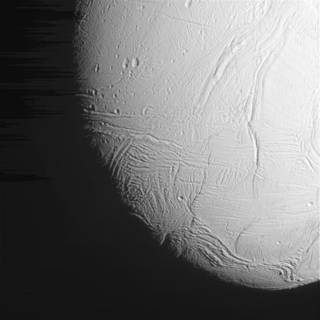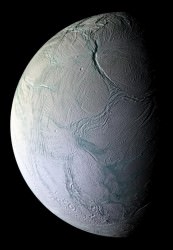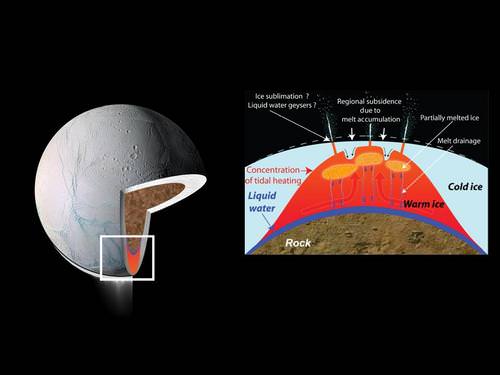Oh, to hitch a ride aboard NASA’s Cassini spacecraft this week. The Saturn orbiting sentinel recently completed an amazing series of passes near the enigmatic ice-covered moon Enceladus, including a daredevil dive only 49 km (31 miles) above the southern pole of the moon and through an ice geyser. Images of the dramatic flyby were released by the Cassini team earlier this morning, revealing the moon in stunning detail.
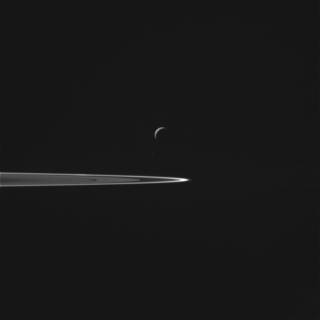
“Cassini’s stunning images are providing us a quick look at Enceladus from this ultra-close flyby, but some of the most exciting science is yet to come,” says NASA mission project scientist Linda Spilker in today’s NASA/JPL press release.
Launched in 1997 from Cape Canaveral Florida in a dramatic night shot, Cassini arrived at the Saturnian system in 2004, and has delivered on some amazing planetary science ever since.
Discovered in 1789 by William Herschel, we got our very first views of Enceladus via the Voyager 1 spacecraft at 202,000 kilometers distant in 1980. Cassini has flown by the moon 21 times over the past decade, and ice geysers were seen sprouting from the surface of the moon by Cassini on subsequent flybys. one final flyby of Enceladus is planned for this coming December.
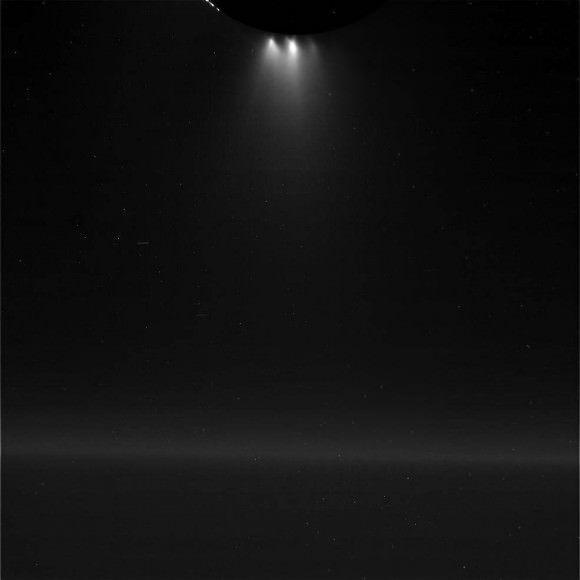
Mission planners are getting more daring with the spacecraft as its mission nears completion in 2017. The idea of reaching out and ‘tasting’ an icy plume emanating from Enceladus has been an enticing one, though a fast-moving good-sized ice pellet could spell disaster for the spacecraft.
NASA successfully established contact with the spacecraft on Wednesday night October 28th after the closest approach for the flyby at 11:22 AM EDT/ 15:22 UT (Universal Time) earlier in the day. Cassini is reported to be in good health, and we should see further images along with science data returns in the weeks to come.

A second, more distant flyby of Enceladus was completed by Cassini earlier this month as it passed 1,142 miles (1,839 kilometers) from the northern pole of Enceladus on October 14th, 2015 on its E-20 flyby.
But beyond just pretty post-cards from the outer solar system, Cassini’s successive passes by the mysterious moon will characterize just what might be occurring far down below.
Why Enceladus? Well, ever since ice geysers were spotted gushing from the fractured surface of the moon, it’s been on NASA’s short list of possible abodes for life in the solar system. Other contenders include Mars, Jupiter’s moon Europa, and Saturn’s giant moon, Titan. If the story of life on Earth is any indication, you need a place where an abundant level of chemical processes are occurring, and a subsurface ocean under the crust of Enceladus heated by tidal flexing may just fit the bill.
We’ll be adding further images and info to this post as more data comes in over the weekend, plus Cassini mission highlights, a look at the mission and final objectives and the last days of Cassini and more…
Stay tuned!
The end of Cassini in 2017 as it burns up in the atmosphere of Saturn will be a bittersweet affair, as our outer solar system eyes around the ringed planet fall silent. Cassini represents the most distant spacecraft inserted into orbit around a planet, and ESA’s Huygens lander on Titan marked the most remote landing on another world as well. Will we one day see a Titan Blimp or Ocean Explorer, or perhaps a dedicated life-finding mission to Enceladus? Final mission objectives for NASA’s Cassini spacecraft include a final flyby of Saturn’s large moon Titan, which will set the course for its final death plunge into the atmosphere of Saturn on September 15th, 2017.
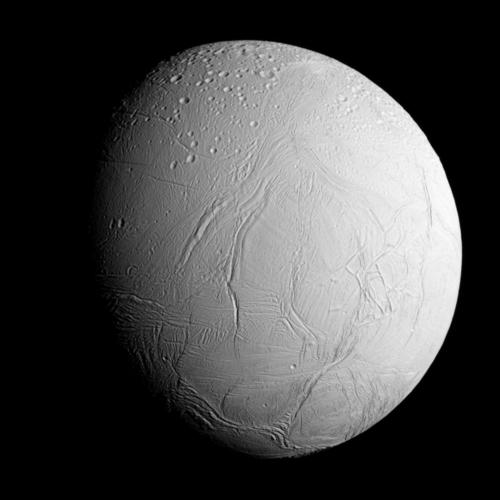
Want to see Enceladus for yourself? The moon orbits Saturn once every 1.4 days, reaching a maximum elongation of 13″ from the ring tips of Saturn and a maximum brightness of magnitude +11.7. Enceladus is one of six major moons of Saturn visible in a backyard telescope, and one of 62 moons of the ring planet known overall. The other five moons within reach of an amateur telescope are: Titan, Mimas, Dione, Rhea, and Tethys, and the fainter moon Hyperion shining at magnitude +15 might just be within reach of skill observers with large light bucket instruments.
Enjoy the amazing views of Enceladus, courtesy of Cassini!

